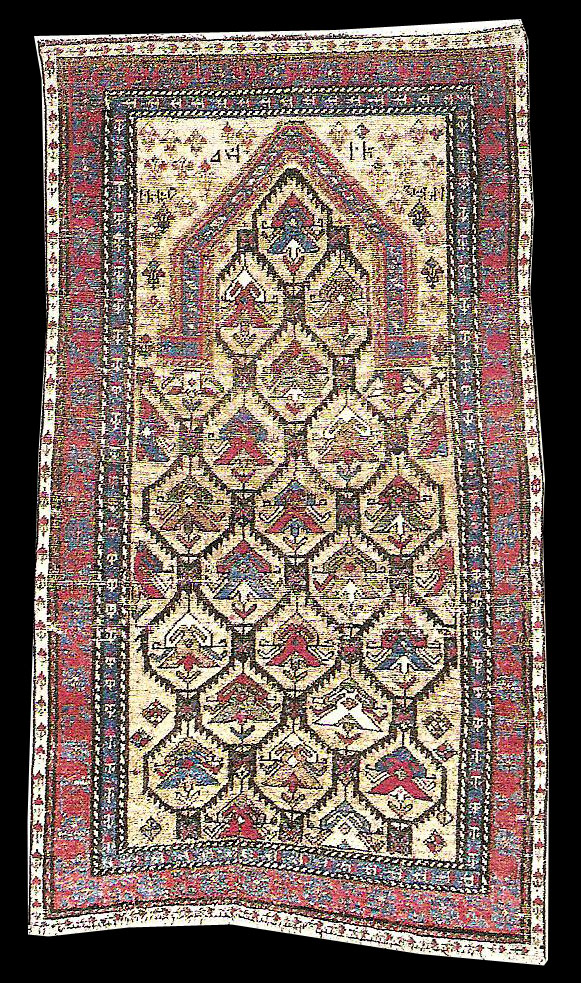|
The tradition of silk weaving in the Caucasus is an old one. Early travel
chronicles refer to the sericul ture of the region, and some splendid
examples of seventeenth- and eighteenth-century silk embroidery survive from
Azerbaijan and Daghestan. Early Caucasian prayer rugs piled in silk are
extremely rare, however.
This example is most likely from Daghestan, by virtue of its design and the
fact that we know that silk was readily available in the area. (Some Kaitag
emboideries - a type of silk embroidery now identified as coming from
Daghestan - date from the seventeenth century and thus offer conclusive
proof of a long tradition of silk weaving in the area.) The rug is small,
with a light yellow field. The ascending lattice traces the shape of the
free-floating prayer arch, a rare feature among lattice design rugs. The rug
has been woven 'upside down', with the palmettes pointing towards the bottom
and the pile slanting towards the top. The practical reason for this
technical feature, more typical of Turkish weavings, is to enable the
faithful's palms and knees to be placed with (rather than against) the pile
during the act of prayer. This charming rug was almost certainly a very
special piece commissioned for a specific occasion.
published Ralph Kaffel's Caucasian Prayer Rugs, plate 64
lit: published Ralph Kaffel's Caucasian Prayer Rugs, plate 64
 |

